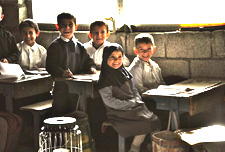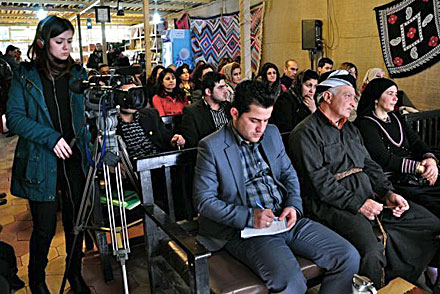Is Female Genital Mutilation an Islamic Problem?
by Thomas von der Osten-Sacken and Thomas Uwer
Among social activists and feminists, combating female genital mutilation (FGM) is an important policy goal. Sometimes called female circumcision or female genital cutting, FGM is the cutting of the clitoris of girls in order to curb their sexual desire and preserve their sexual honor before marriage. The practice, prevalent in some majority Muslim countries, has a tremendous cost: many girls bleed to death or die of infection. Most are traumatized. Those who survive can suffer adverse health effects during marriage and pregnancy. New information from Iraqi Kurdistan raises the possibility that the problem is more prevalent in the Middle East than previously believed and that FGM is far more tied to religion than many Western academics and activists admit.
Many Muslims and academics in the West take pains to insist that the practice is not rooted in religion[1] but rather in culture. "When one considers that the practice does not prevail and is much condemned in countries like Saudi Arabia, the center of the Islamic world, it becomes clear that the notion that it is an Islamic practice is a false one," Haseena Lockhat, a child clinical psychologist at North Warwickshire Primary Care Trust, wrote.[2] True, FGM occurs in non-Muslim societies in Africa. And in Arab states such as Egypt, where perhaps 97 percent of girls suffer genital mutilation,[3] both Christian Copts and Muslims are complicit.
But at the village level, those who commit the practice believe it to be religiously mandated. Religion is not only theology but also practice. And the practice is widespread throughout the Middle East. Many diplomats, international organization workers, and Arabists argue that the problem is localized to North Africa or sub-Saharan Africa,[4] but they are wrong. The problem is pervasive throughout the Levant, the Fertile Crescent, and the Arabian Peninsula, and among many immigrants to the West from these countries. Silence on the issue is less reflective of the absence of the problem than insufficient freedom for feminists and independent civil society to raise the issue.
Detecting Female Genital Mutilation
It is perhaps understandable that many diplomats and academics do not recognize the scope of the problem. Should someone wish to understand the sexual habits of Westerners, he would not face a difficult task. He could survey personal advertisements, watch talk shows, and read magazine articles explaining the best ways to enhance sexual experience, not to mention numerous scientific publications on sex and gender relations. Public knowledge of trivial and even painful matters is incumbent in Western culture. The multitude of sexual habits and gender relations represents a vital element of life in the West, much the same as the economy, politics, sports, and culture.
If, however, someone wants to study sexual relations and habits in Middle Eastern societies, it would be difficult to find comparable traces in public. Almost everything connected with sexuality and personal relations is hidden in a private sphere. Advisory books and research on sexual habits are almost nonexistent beyond comprehensive rules and prohibitions outlined by Islamic law or, in Shi‘ite societies, beyond the questions and responses submitted to senior ayatollahs. Sex education is not taught at the university, let alone in any high school. Psychology remains a shadow discipline, almost absent in the eastern Middle East and only slightly more present in North Africa where more than a century of French rule offered more opportunity for it to take root. The Library of the British Psychoanalytical Society, for example, holds only one journal on psychotherapy or psychoanalysis in Arabic. Arab psychoanalyst Jihad Mazarweh gave an interview in the German weekly Die Zeit in which he said, "For most people, speaking about sexuality, as it happens in psychoanalysis, is almost unthinkable."[5] It would be a mistake to interpret lack of public discussion of many sexual issues in the Middle East as indicative of a lack of problems. Rather, the silence only reflects the strength of taboo.
Female genital mutilation has been a top priority for United Nations agencies and nongovernmental organizations (NGOs) for almost three decades. As early as 1952, the U.N. Commission on Human Rights adopted a resolution condemning the practice.[6] International momentum against the practice built when, in 1958, the Economic and Social Council invited the World Health Organization to study the persistence of customs subjecting girls to ritual operations.[7] They repeated their call three years later.[8] The 1979 Convention on the Elimination of All Forms of Discrimination against Women denounced the practice,[9] and the 1989 Convention on the Rights of the Child identified female genital mutilation as a harmful traditional practice.[10] According to the Demographic and Health Surveys Program, a project funded by the United States Agency for International Development to assist in undertaking medical and reproductive health surveys, FGM affects 130 million women in twenty-eight African countries.[11] Rather than diminishing as countries modernize, FGM is expanding.[12]
Anthropologists and activists identify three main types of FGM. Pharaonic circumcision refers to the removal of the entire clitoris; the labia minora and medial part of the labia majora are cut with both sides of the organ stitched together to leave only a small opening. Clitorectomy requires the removal of the entire clitoris along with part of the labia minora. Sunna circumcision, the most common form in the Islamic world, requires removal of the prepuce of the clitoris.
Genital Mutilation: An African Phenomenon?
Many experts hold that female genital mutilation is an African practice. Nearly half of the FGM cases represented in official statistics occur in Egypt and Ethiopia; Sudan also records high prevalence of the practice.[13] True, Egypt is part of the African continent but, from a cultural, historical, and political perspective, Egypt has closer ties to the Arab Middle East than to sub-Saharan Africa. Egypt was a founding member of the Arab League, and Egyptian president Gamal Abdel Nasser came to personify Arab nationalism between 1952 until his death in 1970. That FGM is so prevalent in Egypt should arouse suspicion about the practice elsewhere in the Arab world, especially given the low appreciation for women's rights in Arab societies. But most experts dismiss the connection of the practice with Islam. Instead, they explain the practice as rooted in poverty, lack of education, and superstition.
Few reports mention the existence of FGM elsewhere in the Middle East, except in passing. A UNICEF report on the issue, for example, focuses on Africa and makes only passing mention of "some communities on the Red Sea coast of Yemen." UNICEF then cites reports, but no evidence, that the practice also occurs to a limited degree in Jordan, Gaza, Oman, and Iraqi Kurdistan.[14] The German semigovernmental aid agency, the Gesellschaft für Technische Zusammenarbeit, reports that FGM is prevalent in twenty-eight African countries but only among small communities "in a few Arab and Asian countries (e.g., Yemen, a few ethnic groups in Oman, Indonesia, and Malaysia).[15] Some scholars have asserted that the practice does not exist at all in those countries east of the Suez Canal.[16] Such assertions are wrong. FGM is a widespread practice in at least parts of these countries.[17]
Latest findings from northern Iraq suggest that FGM is practiced widely in regions outside Africa. Iraqi Kurdistan is an instructive case. Traditionally, Kurdish society is agrarian. A significant part of the population lives outside cities. Women face a double-burden: they are sometimes cut off from even the most basic public services and are subject to a complex of patriarchal rules. As a result, living conditions for women are poor. Many of the freedoms and rights introduced by political leaders in Iraqi Kurdistan after the establishment of the safe-haven in 1991 are, for many women, more theoretical than actual.
In early 2003, WADI, a German-Austrian NGO focusing on women's issues,[18] started to work with mobile teams to take medical aid and social support to women in peripheral Kurdish areas such as in the Garmian region of Iraqi Kurdistan. These all-female teams consisting of a physician, a nurse, and a social worker built trust and opened doors in local communities otherwise sealed against outsiders. After more than a year of working in the area, women began to speak about FGM. Kurds in the area practice Sunna circumcision. Midwives often perform the operation with unsterilized instruments or even broken glass and without anesthesia on girls four to twelve years old. The extent of mutilation depends on the experience of the midwife and the luck of the girl. The wound is then treated with ash or mud with the girls then forced to sit in a bucket of iced water. Many Kurdish girls die, and others suffer chronic pain, infection, and infertility. Many say they suffer symptoms consistent with posttraumatic stress disorder syndrome.[19]
Subsequent research found that 907 out of 1,544 women questioned had undergone genital circumcision, a cutting rate of nearly 60 percent.[20] Follow-up research in the Irbil and Kirkuk governorates suggests rates of FGM consistent with those in Garmian. Nearly every woman questioned declared FGM to be a "normal" practice. Most women referred to the practice as both a tradition and a religious obligation. When asked why they subject their daughters to the operation, many women respond "it has always been like that." Because the clitoris is considered to be "dirty" (haram, the connotation is forbidden by religion), women fear that they cannot find husbands for their daughters if they have not been mutilated; many believe men prefer sex with a mutilated wife. Others stress the religious necessity of FGM even though Islamic law is unclear with regard to FGM. While Western scholars may dismiss the religious roots of the practice, what counts is that many Islamic clerics in northern Iraq advise women to practice FGM. Should a woman consider abandoning the practice, she must be aware that she could appear as disreputable in the public eye.[21] Men usually avoid offering a clear statement about whether FGM is a good practice; rather, they refer to FGM as a female practice in which men should not interfere. None of the men said he had ever discussed the question with his wife.[22]
The reaction of locals to the findings has been instructive. When confronted with the study results, only a few women's activists in the Iraqi Kurdish city of Sulaimaniya expressed surprise although most said they did not realize just how high a proportion of women was affected.[23] While a local researcher and women's rights activist Ronak Faraj had published a study on female circumcision in Sulaimaniya in 2004,[24] the fact that an international NGO had become aware of the problem bolstered public attention. While many Kurdish authorities were at first reluctant to address the issue for fear that the Kurdish region might appear backward, they now acknowledge the problem and are working to confront it with both an awareness campaign and with legislation.[25] But some members of influential Islamic and Arabic organizations in the diaspora scandalized the findings, accusing WADI of trying to insult Islam and spread anti-Islamic propaganda. Tarafa Baghajati and Omar al-Rawi, both members of the Initiative of Muslim Austrians, called the data part of an "Islamophobic campaign" and declared no FGM exists in Iraq.[26] That Islamic and Arabic organizations in Austria, for example, make such arguments is indicative of the problem affecting FGM data: these groups believe that if there are no such anti-FGM campaigns or studies, then they can bypass an embarrassing problem.
Such campaigns take time. In Egypt, anti-FGM education campaigns inaugurated in the mid-1990s are only now bearing fruit.[27] The idea that rooted practices cannot be changed is false. For centuries, foot-binding crippled Chinese women. An anti-foot-binding society formed only in 1874, but the activists were successful in scaling back and, eventually, eliminating the practice.[28] In Western societies, too, open public discourse on sexuality became possible only by persistent struggle in the face of stark opposition. The heated reactions to the 1948 Kinsey Report—and the portion concerning female sexuality published in 1953—are a case in point.[29]
How Widespread Is Female Genital Mutilation?
The discovery of widespread FGM in Iraqi Kurdistan suggests the assumption to be incorrect that FGM is primarily an African phenomenon with only marginal occurrence in the eastern Islamic world. If FGM is practiced at a rate of nearly 60 percent by Iraqi Kurds, then how prevalent is the practice in neighboring Syria where living conditions and cultural and religious practices are comparable? According to Fran Hosken, late founder of the Women's International Network News and author of groundbreaking research on FGM in 1975, "There is little doubt that similar practices—excision, child marriage, and putting rock salt into the vagina of women after childbirth—exist in other parts of the Arabian Peninsula and around the Persian Gulf." [30] That no firsthand medical records are available for Saudi Arabia or from any other countries in that region does not mean that these areas are free of FGM, only that the societies are not free enough to permit formal study of societal problems. That diplomats and international aid workers do not detect FGM in other societies also should not suggest that the problem does not exist. After all, FGM was prevalent in Iraqi Kurdistan for years but went undetected by the World Health Organization, UNICEF, and many other international NGOs in the region. Perhaps the most important factor enabling an NGO to uncover FGM in Iraqi Kurdistan was the existence of civil society structures and popular demand for individual rights. Such conditions simply do not exist in Syria, Saudi Arabia, or even the West Bank and Gaza where local authorities fight to constrain individual freedoms rather than promote them.
But the problem is not only that autocratic regimes tend to suppress the truth. There also must be someone in place to conduct surveys. Prior to Iraq's liberation, it was impossible to undertake independent surveys on issues such as malnutrition and infant mortality. Saddam Hussein's regime preferred to supply data to the U.N. rather than to enable others to collect their own data which might not support the conclusions the Baathist regime desired to show. The oft-cited 1999 UNICEF study claiming that U.N. sanctions had led to the deaths of 500,000 children was based on figures supplied by Saddam's regime, not an independent survey.[31] The U.N. undertook its first reliable statistical research on the living conditions in Iraq only after liberation.[32] Syrian, Saudi, and Iranian authorities simply do not let NGOs operate without restriction, especially when they deal with sensitive social issues.
Taboo—not social but political—is another factor undercutting research on FGM in Arab countries. Many academics and NGO workers in the region find it objectionable to criticize the predominant Muslim or Arab cultures. They will bend over backwards to avoid the argument that FGM is rooted in Arab or Muslim cultures even though no one argues that FGM is exclusively an Arab or Muslim problem. Statistical data from African countries indicate no clear relationship between FGM and a specific religion.[33] Still, this does not mean that the causes of FGM do not vary across regions and that religion has no influence. As California State University anthropologist Ellen Gruenbaum has explained, "People have different and multiple reasons [for FGM] … For some it is a rite of passage. For others it is not. Some consider it aesthetically pleasing. For others, it is mostly related to morality or sexuality."[34] Hanny Lightfoot-Klein, an internationally known expert on FGM who spent years in Kenya, Egypt, and Sudan, explains that "it is believed in the Sudan that the clitoris will grow to the length of a goose's neck until it dangles between the legs, in rivalry with the male's penis, if it is not cut."[35]
Most studies speak of "justifications"[36] and "rationalizations"[37] for FGM but do not speak of causes since this could implicate Islamic rules relating to women and sexual morality. Islam is regarded as a wrong "justification," often with a citation that the Qur'an does not require FGM. That many women in northern Iraq—and presumably many women in Egypt—believe that the practice is rooted in religion is a factor ignored by Western universities and international organizations.
Islamic Scholars on Female Genital Mutilation
Islamic scholars disagree on FGM: some say no obligatory rules exist while others refer to the mention of female circumcision in the Hadith. According to Sami A. Aldeeb Abu Sahlieh, a Palestinian-Swiss specialist in Islamic law:
The most often mentioned narration reports a debate between Muhammed and Um Habibah (or Um ‘Atiyyah). This woman, known as an exciser of female slaves, was one of a group of women who had immigrated with Muhammed. Having seen her, Muhammad asked her if she kept practicing her profession. She answered affirmatively, adding: "unless it is forbidden, and you order me to stop doing it." Muhammed replied: "Yes, it is allowed. Come closer so I can teach you: if you cut, do not overdo it, because it brings more radiance to the face, and it is more pleasant for the husband."[38]
Abu Sahlieh further cited Muhammad as saying, "Circumcision is a sunna (tradition) for the men and makruma (honorable deed) for the women."[39]
While some clerics say circumcision is not obligatory for women, others say it is. "Islam condones the sunna circumcision … What is forbidden in Islam is the pharaonic circumcision,"[40] one religious leader explained. Others, such as the late rector of Al-Azhar University, Sheikh Gad al-Haq, said that since the Prophet did not ban female circumcision, it was permissible and, at the very least, could not be banned.[41]
In short, some clerics condemn FGM as an archaic practice, some accept it, and still others believe it to be obligatory. It is the job of clerics to interpret religious literature; it is not the job of FGM researchers and activists. There is a certain tendency to confuse a liberal interpretation of Islam with the reality women face in many predominately Islamic regions. To counter FGM as a practice, it is necessary to accept that Islam is more than just a written text. It is not the book that cuts the clitoris, but its interpretations aid and abet the mutilation.
Conclusions
There are indications that FGM might be a phenomenon of epidemic proportions in the Arab Middle East. Hosken, for instance, notes that traditionally all women in the Persian Gulf region were mutilated.[42] Arab governments refuse to address the problem. They prefer to believe that lack of statistics will enable international organizations to conclude that the problem does not exist in their jurisdictions. It is not enough to consult Islamic clerics to learn about the mutilation of girls in Islamic societies—that is like asking the cook if the guests like the meal. U.N. agencies operating in the region ignore FGM statistics saying they have no applicable mandate to gather such data. Hosken describes it as a cartel of silence: men from countries were FGM is practiced "enjoy much influence at the U.N."[43] and show no interest in tackling pressing social problems.
To tackle the problem, Western countries and human rights organizations need to continue to break down the wall of silence and autocracy that blights the Arab Middle East and better promote the notion of individual rights. They should withhold conclusions about the breadth of FGM and, for that matter, other social problems or political attitudes until they can conduct independent field research.
Thomas von der Osten-Sacken and Thomas Uwer are, respectively, managing director and board member of WADI.
[1] See, for example, Marie José Simonet, "FMG: Sunna oder Verbrechen aus Tradition," stopFMG.net, Vienna, June 24, 2005.[2] Haseena Lockhat, Female Genital Mutilation: Treating the Tears (London: Middlesex University Press, 2004), p. 16.
[3] Weibliche Genitalverstümmelung: Geschichte, Ausmaß, Formen und Folgen (Vienna: Renner Institut, 2004), p. 6.
[4] See, for example, Innocenti Digest: Changing a Harmful Social Convention: Female Genital Mutilation/Cutting (Florence: UNICEF, 2005).
[5] Die Zeit (Hamburg), May 11, 2006.
[6] See, for example, Changing a Harmful Social Convention, p. VII.
[7] "Fact Sheet no. 23, Harmful Traditional Practices Affecting the Health of Women and Children," U.N. Office of the High Commissioner for Human Rights, Geneva, accessed Aug. 11, 2006.
[8] ECOSOC resolution 821 II (XXXII); ibid.
[9] "Convention on the Elimination of All Forms of Discrimination against Women," U.N. General Assembly resolution 34/180, Dec. 18, 1979.
[10] "Convention on the Rights of the Child," U.N. General Assembly resolution 44/25, Nov. 20, 1989, art. 24, 3.
[11] Dara Carr, Female Genital Cutting: Findings from the Demographic and Health Surveys Program (Calverton, Md.: Macro International, 1997), p. 1.
[12] Gerry Mackie, "A Way to End Female Genital Cutting," Female Genital Cutting education and Networking Project, Tallahassee, Fla., accessed Aug. 4, 2006.
[13] Eiman Okro, "Weibliche Genitalverstümmelung im Sudan," PhD dissertation, Humboldt University, Berlin (Hamburg: Akademos Science Publishing House, 2001); "Female Genital Mutilation in Africa: Information by Country," Amnesty International, accessed Sept. 1, 2006.
[14] Changing a Harmful Social Convention, p. 3.
[15] "What Is Female Genital Mutilation?" Gesellschaft fuer Technische Zusammenarbeit, Frankfurt, Ger., 2005, accessed Aug. 4, 2006.
[16] See, for example, "Female Genital Mutilation (FGM) in Africa, The Middle East and Far East: Where, Why and How It Is Done," Ontario Consultants on Religious Tolerance, updated Mar. 2005.
[17] Fran P. Hosken, The Hosken Report: Genital and Sexual Mutilation of Females (Lexington: The Women's International Network News, 1993), pp. 275-8.
[18] WADI, offices in Frankfurt and Sulaimaniya.
[19] Janet Menage, "Post-Traumatic Stress Disorder in Women Who Have Undergone Obstetric and/or Gynecological Procedures. A Consecutive Series of 30 Cases of PTSD," Journal of Reproductive and Infant Psychology, 11(1993): 221-8.
[20] Data derived from WADI field research in the Garmian region of Iraqi Kurdistan, 2005; Christian Science Monitor, Aug. 10, 2005; Radio Free Europe/Radio Liberty, Jan. 21, 2005; "Widespread FGM in Northern Iraq," Global Health Council, Jan. 6, 2005; "Iraq: Decades of Suffering, Now Women Deserve Better," Amnesty International, London, Feb. 22, 2005.
[21] Mackie, "A Way to End Female Genital Cutting."
[22] WADI field research, 2005.
[23] U.N. Integrated Regional Information Networks (IRIN), Mar. 16, 2005.
[24] Ronak Faraj, "Female Circumcision," Women Information and Culture Center, Sulaimaniya, Iraq, 2004.
[25] The Irish Times (Dublin), Oct. 25, 2005.
[26] Judith Götz, " Anmerkungen zu einer Veranstaltung‚ Die politische Lage im Irak," Jan. 28, 2005, accessed Oct. 11, 2006.
[27] NBC News, Oct. 21, 2004.
[28] Mackie, "A Way to End Female Genital Cutting"; Marie Vento, "One Thousand Years of Chinese Footbinding: Its Origins, Popularity and Demise," paper, City University of New York, Mar. 7, 1998.
[29] "American Experience: Kinsey in the News," Public Broadcasting Service, Jan. 27, 2005.
[30] Hosken, The Hosken Report, p. 278.
[31] Michael Rubin, "Sanctions on Iraq: A Valid Anti-American Grievance?" Middle East Review of International Affairs, June, 2002.
[32] "Iraq Living Conditions Survey 2004," United Nations Development Program, Baghdad, 2005.
[33] Female Genital Mutilation/Cutting. A Statistical Exploration (New York: UNICEF, 2005), p. 10.
[34] Ellen Gruenbaum, The Female Circumcision Controversy: An Anthropological Perspective. (Philadelphia: University of Pennsylvania Press, 2000), p. 33.
[35] Hanny Lightfoot-Klein. "Prisoners of Ritual: Some Contemporary Developments in the History of Female Genital Mutilation," presented at the Second International Symposium on Circumcision in San Francisco, Apr. 30-May 3, 1991.
[36] Julia M. Masterson and Julie Hanson Swanson, Female Genital Cutting: Breaking the Silence, Enabling Change (Washington, D.C.: International Center for Research on Women and the Center for Development and Population Activities, 2000), p. 5.
[37] "Female Genital Mutilation: A Joint WHO/UNICEF/UNFPA Statement," Geneva, 1997.
[38] Sami A. Aldeeb Abu Sahlieh, "To Mutilate in the Name of Jehovah or Allah: Legitimization of Male and Female Circumcision," Medicine and Law, July 1994, pp. 575-622.
[39] Ibid.
[40] Razor's Edge: The Controversy of Female Genital Mutilation, IRIN, Mar. 2005; Sheikh Omer, interview, IRINnews.org, U.N. Office for the Coordination of Humanitarian Affairs, Mar. 8, 2005.
[41] "Appendix: Is Female Circumcision Required?" Jannah.org, accessed Aug. 11, 2005.
[42] Hosken, The Hosken Report, p. 277.
[43] Ibid., p. 375.
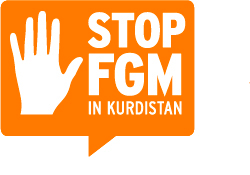


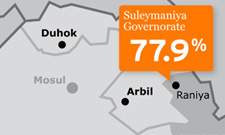

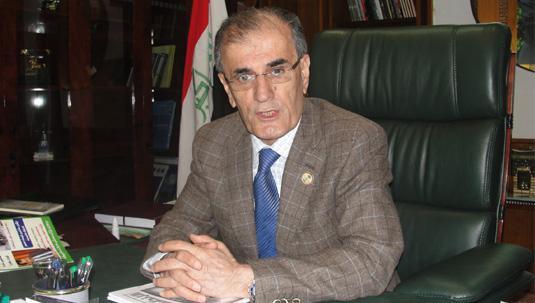
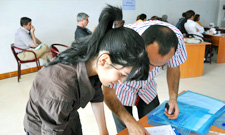
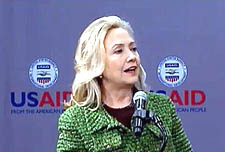 Clinton: 'Cultural Tradition' is No Excuse for Female Genital Mutilation
Clinton: 'Cultural Tradition' is No Excuse for Female Genital Mutilation